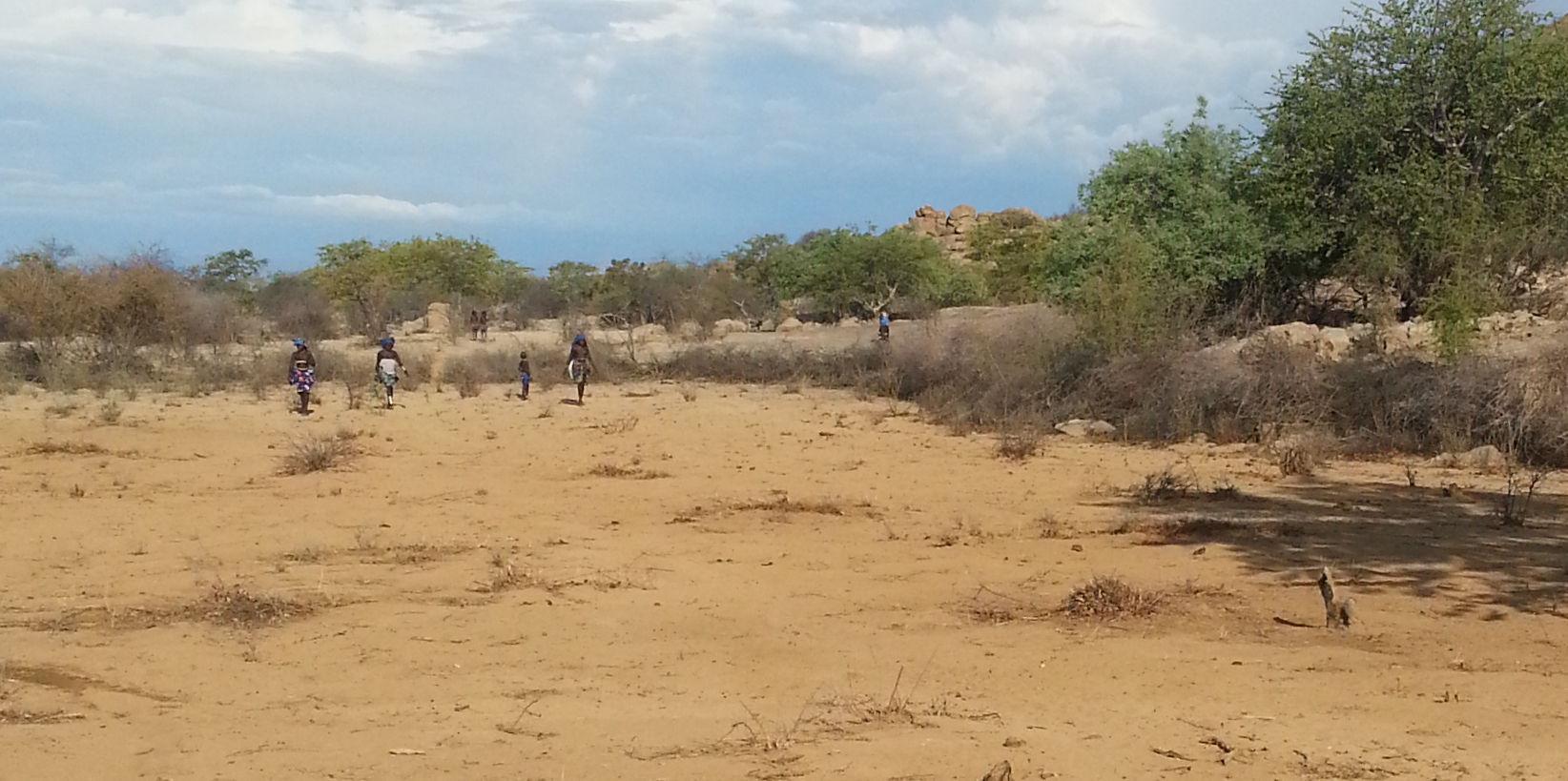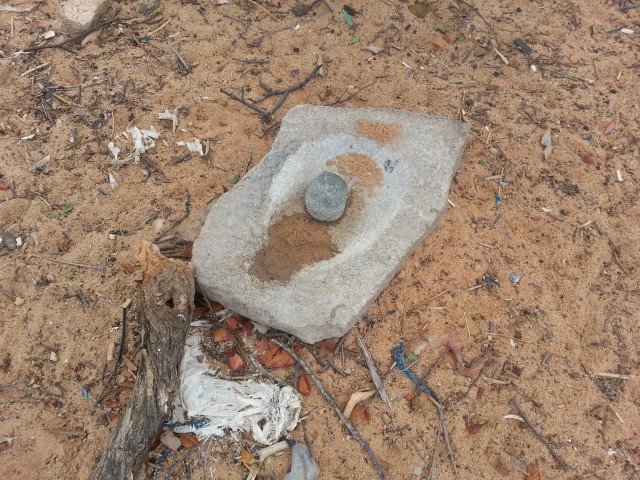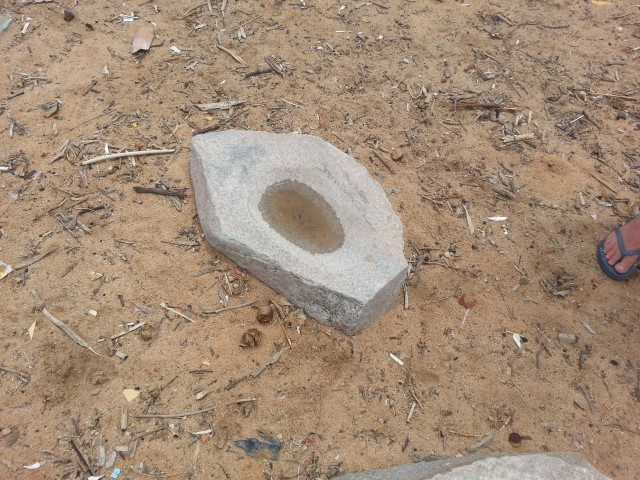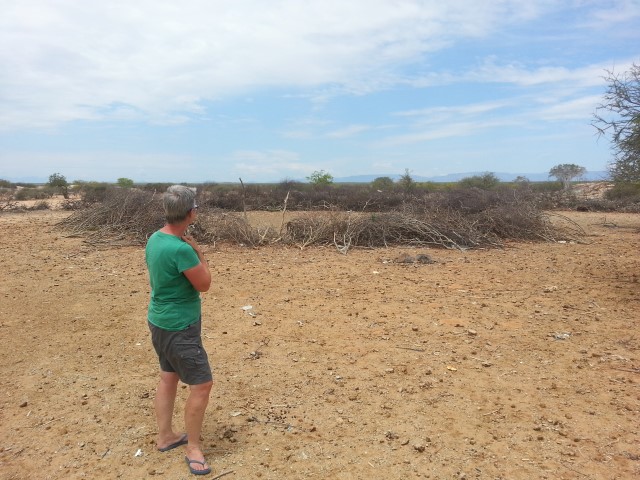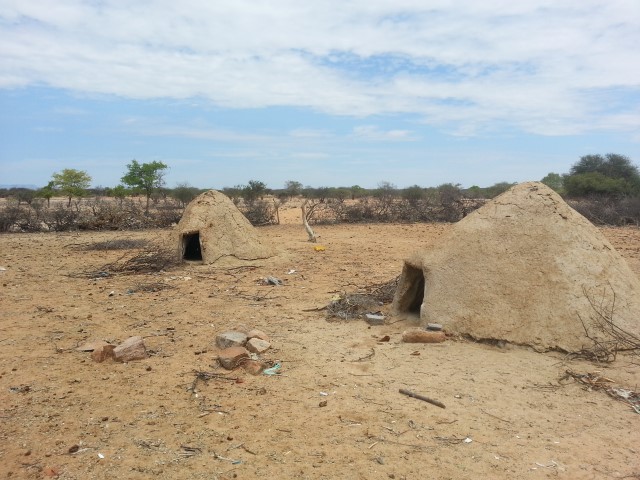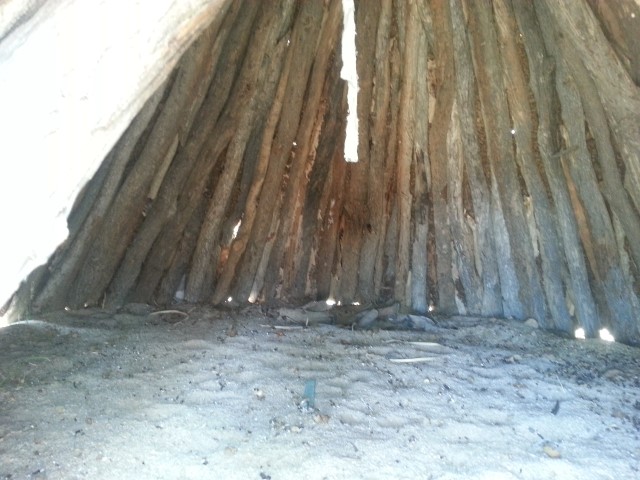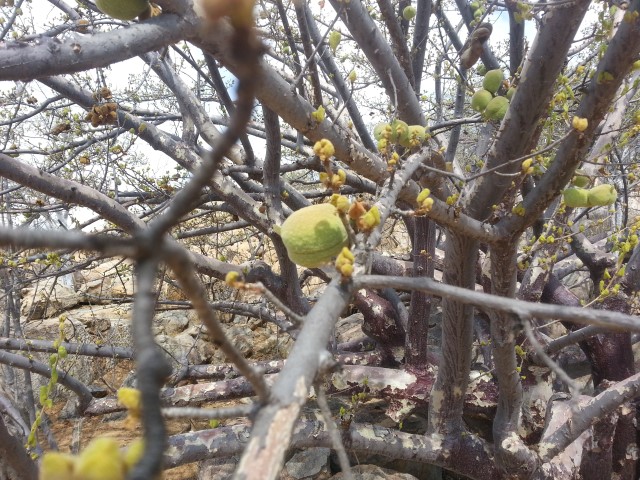That abandoned family compound we visited just north of Tchitundo-Hulo comprised 6 or 7 domed huts, all with doors facing east, made of mud or dung or maybe both. The huts where people slept – one for the head of the family, the housewife’s hut and the boys’ and girls’ huts – had floors of the same building material. The head of the family’s hut was closed off with a piece of metal held in place with rope. The rest were open. One hut had a gourd and a piece of a vehicle’s tail light inside. We didn’t look in all of them, but the others that we did look in were empty. When we stayed at the mission campground just south of Ondangwa, there was a museum which featured a similar family compound of huts with labels and short descriptions. I’ve given the same names to the huts we saw here.
The storage huts had dirt floors. There were 2 grinding stones in the yard, bowl-shaped from use(which made my baker’s heart sing, I was more excited to see those 2 stones than anything else there!). One stone also had the hand-held ‘pestle’ with it. Nearby was a fireplace enclosed by stones, and an open shelter made of sticks with leafy branches forming the roof. There was also an enclosure for livestock in the south-eastern corner of the compound – a fenced off area made with the same thorny branches that made up the outer fence. In the north-western corner near a tree there were 4 tall forked branches – a couple standing in the ground, the others leaning against the tree
Scattered near the fireplace and a couple of the huts were several battered cooking pots, around 3 or 4 litre capacity. There wasn’t much evidence of ash or coal. Most of the other debris was rubbish and dung, a lot of dung. Broken bottles, bits of plastic, fragments of cloth. I wondered if the compound had been abandoned because it just got too dirty. The dung may have been left by roaming livestock after the family moved out.
In another compound nearby, we saw tent-like structures made of pieces of fabric and plastic over domed sticks and branches
We met ‘the locals’ when we were walking near the rock. We could hear voices higher up and a couple of kids saw us and let everyone else know. 2 young men walked down the rock, greeted us and then kept on walking. They were each carrying a sharp shiny machete and wearing sandals made of tyre soles and string straps and ties. Everyone else we met was barefoot. We kept on walking along the eastern side of The Rock and eventually heard more voices and chickens at another compound, but we didn’t get close enough to meet anyone there. We turned back and headed north east, a bit away from The Rock, and met 2 more women with a few little children at the edge of their compound. Mother and daughter perhaps, both still carrying babies. The older woman pointed us back to The Rock and seemed to be asking us for something, rolling her hands around each other.
We changed our course and walked past the place where we’d first met the kids and young men. By then there was a large group, mostly women and children and one man. Everyone except the man was bare chested and wearing fabric loincloths. The women had string tied around their breasts. The man was wearing a t-shirt. They also wanted us to give them something – water? food? my headnet to keep the flies off? Dunno. I had a little tin container of mints and gave it to a young woman. This group was heading back to their compound with their water containers but kept on calling out to us as we walked back to Clancy. They dropped off their kids and containers, then followed us for a while calling out, then eventually went back home.
These people were the most primitive we’ve seen, or are ever likely to see. They are herdsmen with cattle and goats, and some families also raise chickens. They don’t grow anything, we didn’t see any evidence of crops or agriculture. They are hunter-gatherers. They don’t use coconut oil or almond flour or make bone broth or drink alkaline water. And they sure as hell don’t buy Pete Evans’ processed packaged ‘paleo’ ‘food’ from the local supermarket. Sorry, obviously I’m not a fan of either the paleo diet or Paleo Pete.
Maybe they trade some of their livestock for goods – plastic water containers, lengths of fabric. The cattle we saw in this area were the healthiest we’ve seen in Angola. It’s currently the wet season and it looks like Spring for a lot of the local vegetation – bright green leaves at the start of their growth cycle. Close to The Rock, we saw a tall tree with some kind of fruit on it, but probably inedible as there was still a lot of last year’s crop on the tree. Of course, we have zero knowledge of edible flora there, and I’m sure the locals are eating well, they look healthy, but as Greg commented – where are they getting any carbs?
